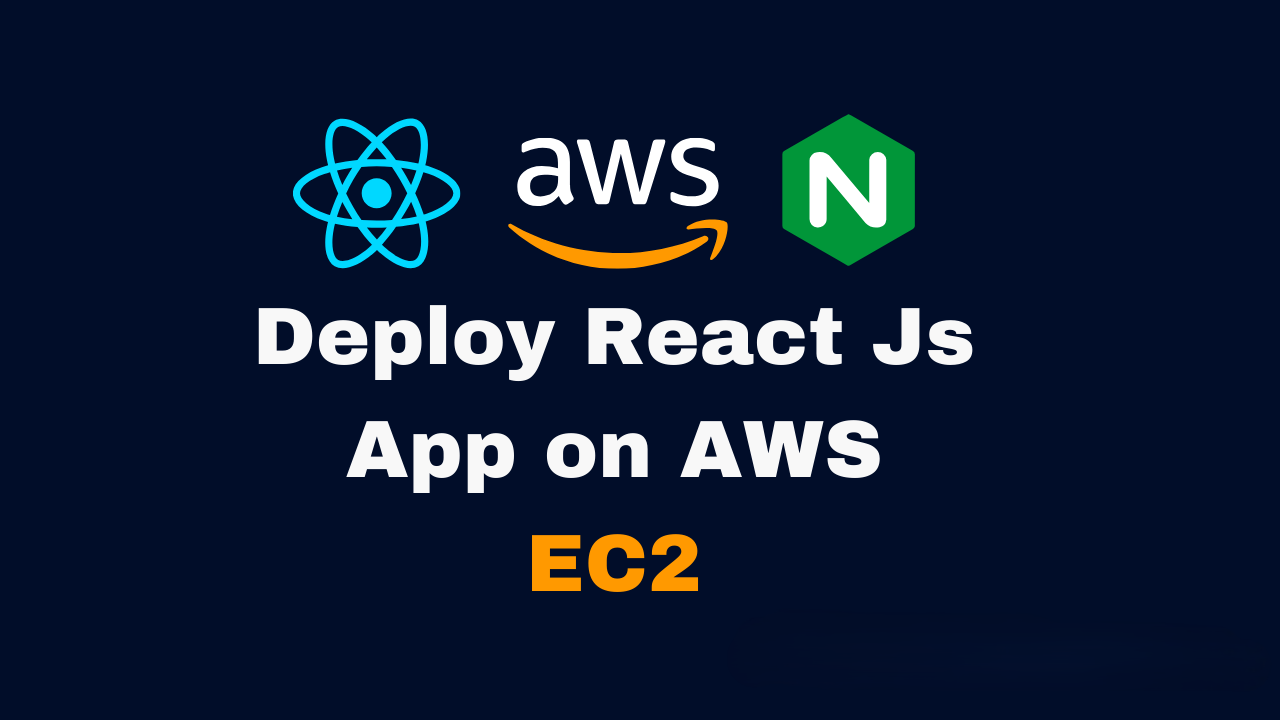Deploy React App on an ubuntu EC2 instances in AWS
 Hamad Saif
Hamad Saif
Step 1: Launch an EC2 Instance
Log in to your AWS Management Console.
Navigate to EC2 and click "Launch Instance."
Choose "Ubuntu Server" (e.g., Ubuntu 20.04 LTS) as the AMI.
Select an instance type (e.g., t2.micro for free tier).
Configure security group: Allow HTTP (port 80) and SSH (port 22).
Download the .pem key file for SSH access.
Step 2: Connect to Your EC2 Instance
Option 1: Using Terminal (SSH
Open a terminal and navigate to the directory with your .pem file.
Run:
ssh -i your-key.pem ubuntu@<ec2-public-ip>
Replace <ec2-public-ip> with your instance’s public IP.
OR
Option 2: Using MobaXterm (Windows Users)
Download and install MobaXterm from its official site.
Open MobaXterm, click "Session" > "SSH."
Enter your EC2 public IP in "Remote host."
Check "Specify username" and enter ubuntu.
Under "Advanced SSH settings," upload your .pem file as the "Private key."
Click "OK" to connect.
Step 3: Update the Instance
Once connected, update the package list:
sudo apt update && sudo apt upgrade -y
Step 4: Install Node.js and npm
Install Node.js (React requires it)
sudo apt install nodejs npm -y
Verify installation
node -v && npm -v
Step 5: Install Git (Optional)
If your React app is in a Git repository
sudo apt install git -y
Step 6: Clone or Upload Your React App
Option 1 : Clone from GitHub:
git clone <your-repo-url>
cd <your-repo-folder>
Option 2 : Upload via SCP:
scp -i your-key.pem -r /local/path/to/react-app ubuntu@<ec2-public-ip>:/home/ubuntu/
Then SSH into the instance and navigate to the app folder.
Option 3 : Upload via FileZilla
Download and install FileZilla from its official site.
Open FileZilla, go to "File" > "Site Manager" > "New Site."
Set:
Protocol: SFTP
Host: <ec2-public-ip>
Logon Type: Key file
User: ubuntu
Key file: Upload your .pem file
Connect, then drag and drop your React app folder to /home/ubuntu/ on the remote side.
SSH into the instance and navigate to the uploaded folder.
Step 7: Install Dependencies
Inside your React app directory:
npm install
Step 8: Build the React App
Generate the production build:
npm run build
This creates a build folder with optimized files.
Step 9: Install a Web Server (e.g., Nginx)
Install Nginx to serve the app:
sudo apt install nginx -y
Start Nginx:
sudo systemctl start nginx
sudo systemctl enable nginx
Step 10: Configure Nginx to Serve the React App
Transfer the build files that present in local through FileZilla to the Nginx directory:
sudo mv build /var/www/html/
Edit the Nginx configuration (if needed)
sudo nano /etc/nginx/sites-available/default
Ensure it points to /var/www/html and supports React routing
server {
listen 80;
server_name <ec2-public-ip>;
root /var/www/html;
index index.html;
location / {
try_files $uri $uri/ /index.html;
}
}
Save (ctrl + x) and then press Y key and exit (hit enter key) , then restart Nginx
sudo systemctl restart nginx
Step 11: Test Your Deployment
Open a browser and enter your EC2 public IP (e.g., http://<ec2-public-ip>).
You should see your React app live!
Step 12: (Optional) Set Up a Domain
Point a domain to your EC2 IP using DNS settings (e.g., Route 53).
Update the Nginx config with your domain name.
Notes:
Keep your .pem file secure and never upload it to the server.
Monitor your EC2 instance and set up auto-scaling if needed.
For production, consider using PM2 to run the app as a Node.js server instead of just serving static files.
Liked this guide? Subscribe to my Hashnode channel for more tutorials on web development, cloud deployment, and tech tips! Follow me [https://hashnode.com/@hamadzip] to stay updated with my latest posts. Happy coding!
Subscribe to my newsletter
Read articles from Hamad Saif directly inside your inbox. Subscribe to the newsletter, and don't miss out.
Written by

Hamad Saif
Hamad Saif
Hey there! 👋 I'mhamad saif , a passionate frontend developer dedicated to crafting seamless user experiences. My love affair with React.js is a journey I cherish, always thrilled to explore new horizons in the ever-evolving web development world. 💻 Currently diving into the clouds ☁️, I'm on a mission to bridge the gap between frontend magic and cloud wonders. As I weave through code, React.js is my trusted companion, and the cloud, my playground for innovation. 🔗 Let's build the future! 🚀